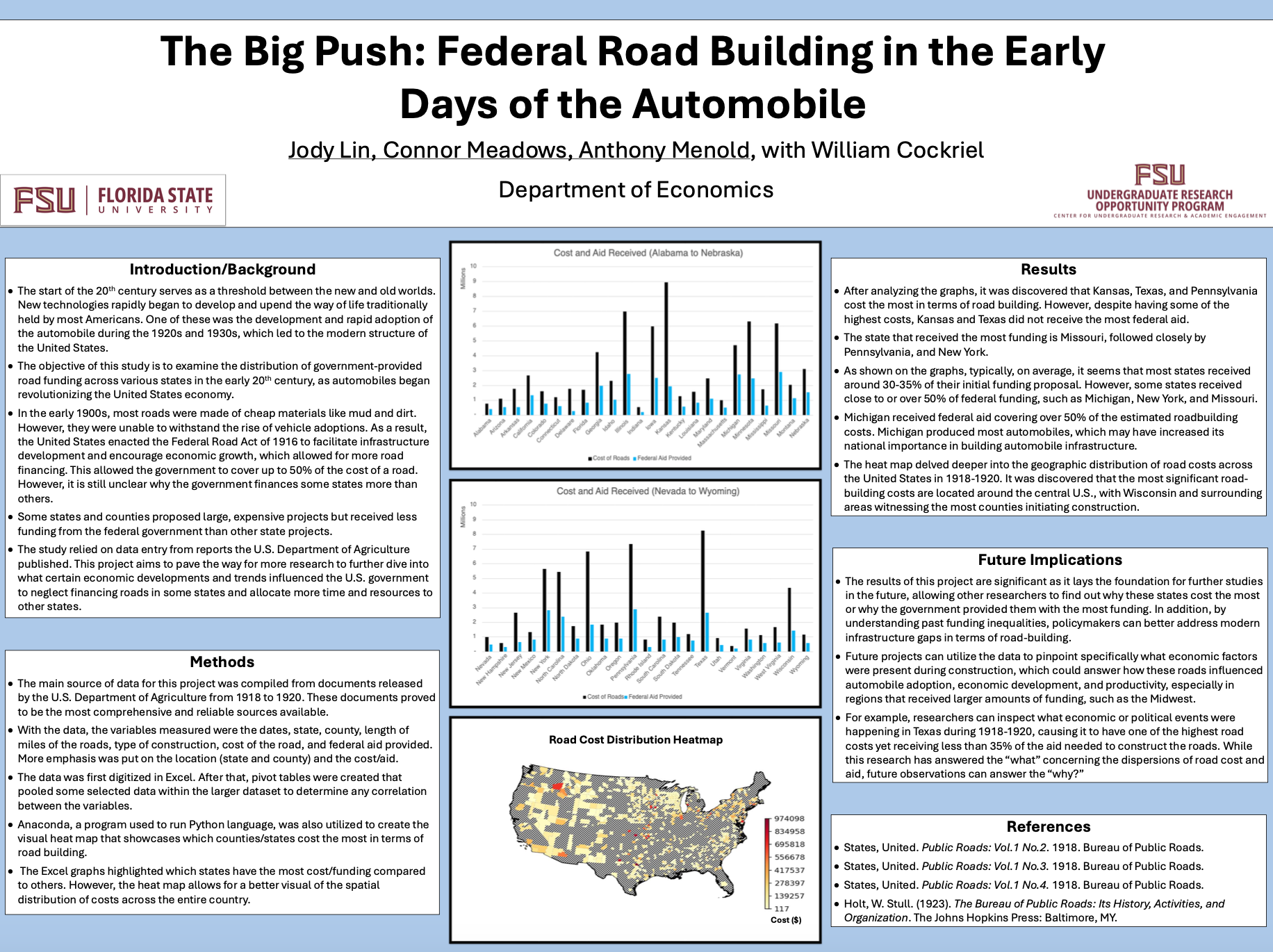Research Symposium
25th annual Undergraduate Research Symposium, April 1, 2025
Connor Meadows Poster Session 2: 10:45 am - 11:45 am/ Poster #138

BIO
My name is Connor Meadows, and I’m a first-year Finance major in the Honors Program at Florida State University. I’m originally from Eden Prairie, Minnesota, and I chose FSU for its strong academic opportunities and vibrant campus life. Outside the classroom, I enjoy volunteering, weightlifting, and playing basketball. Whether I’m helping out in the community or staying active with friends, I value staying engaged and pushing myself to grow. After college, I plan to pursue a career in wealth management or banking, where I can build meaningful relationships and help clients reach their financial goals.
The Big Push: Federal Road Building in the Early Days of the Automobile
Authors: Connor Meadows, Dr. William CockrielStudent Major: Finance
Mentor: Dr. William Cockriel
Mentor's Department: Department of Economics Mentor's College: University of Chicago Co-Presenters: Jody Lin and Anthony Menold
Abstract
The objective of this study is to examine the distribution of government-provided road funding across various states in the early 20th century, as automobiles began revolutionizing the United States economy. The Federal Aid Road Act of 1916 paved the way for cars throughout the U.S. by funding road-building projects proposed by state governments. Some states and counties proposed large, expensive projects but received less funding from the federal government compared to other state projects. The study relied on data entry from reports published by the U.S. Department of Agriculture. Using this new data source, heat maps were created to visually display what areas in the country had the highest cost in road building. In addition, Excel graphs that use plots of total costs and total aid suggest that Kansas, Texas, and Illinois proposed the highest-cost projects. However, Missouri, Pennsylvania, and New York received the most federal aid. Ultimately, the results of this study will lay the foundation for further research in the future, such as what economic factors were present at the time of construction, which could answer how these roads influenced automobile adoption, economic development, and productivity. While this research has answered the “what” concerning the dispersions of road cost and aid, future observations can answer the “why?”
Keywords: Road, Federal Aid, Construction, Research


